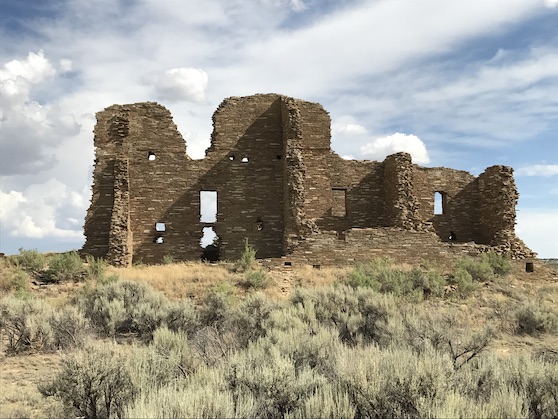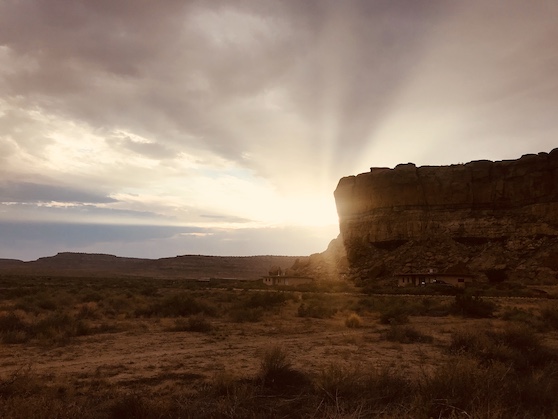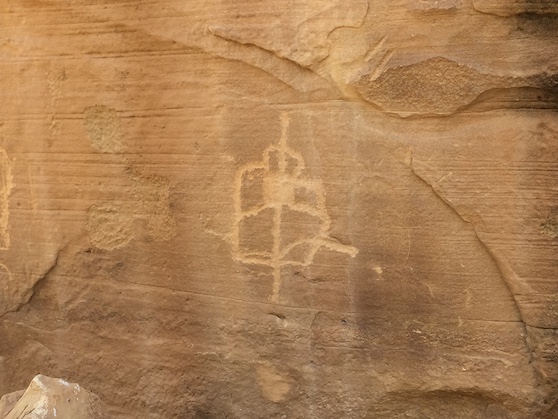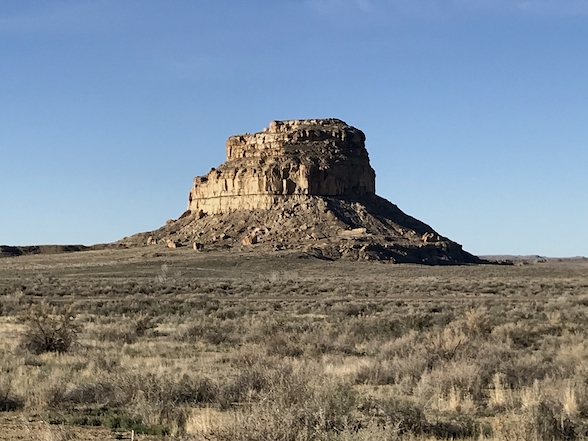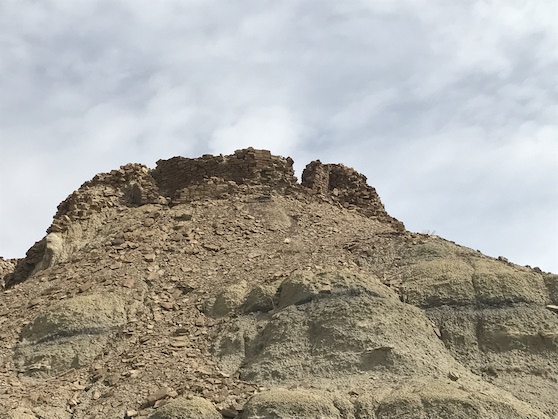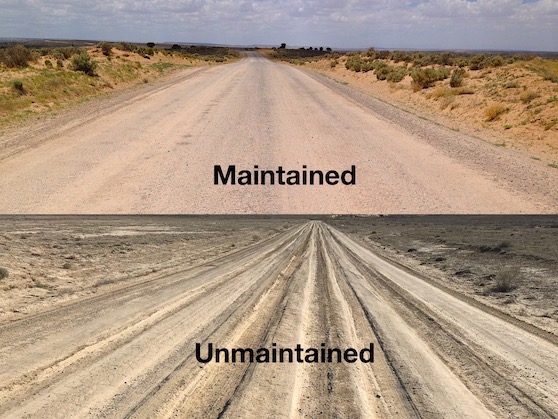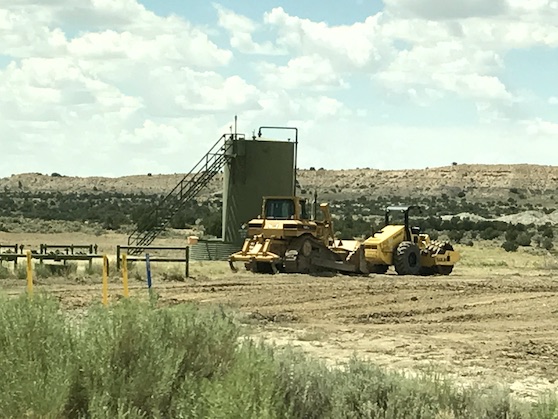The Chaco Road and Opposition to Oil and Gas Development
The Chaco Alliance formed in 2006 in opposition to an attempt to
chip seal the main road into Chaco (CR 7950) without any impact
studies that would protect Chaco Culture National Historical Park
(CCNHP), or the archeological sites in and along the road. The
Chaco Alliance organized the initial meeting with the Federal
Highway Administration (FHWA) in late August of 2006, and we were
the sole citizens' group personally represented at that meeting.
Although the FHWA initially planned to grant a Categorical
Exclusion to the project, preventing all analysis of impacts, the
FHWA agreed to place the road improvement project under National
Environmental Policy Act (NEPA) and National Historic Preservation
Act (NHPA) law.
It was the Chaco Alliance's position from the start that the
improvements to the road were primarily driven by an attempt to
open up better and easier access for economic development. Within
a few years, the BLM would offer thousands of acres near the park
for lease to the oil and gas industry. Also from the start, we
supported improvements to the road short of chip sealing and under
the protections of NHPA. Studies showed that chip sealing could
dramatically increase visitation to the park, overwhelming the
fragile ecosystem as well as putting infrastructure and
archeological sites at risk. We demanded proper procedure and
proper consultation, especially with the tribes. San Juan County
had letters from both the Hopi Tribe and the Pueblo of Zuni asking
for consultation before the initial work on the first three miles
of road began in 2006. To our knowledge, they were not consulted.
In 2007 the Chaco Alliance was part of a coalition of groups that
stopped Cimerax from putting wells on state land just below the
border of the park, south of Fajada Butte. In 2009 the Chaco
Alliance alerted the Hopi Preservation Department that the BLM
intended to offer for lease almost 10,000 acres of land just
outside the park. In October 2009, the BLM withdrew its lease
proposal thanks primarily to the efforts of the Hopi, working in
concert with the Chaco Alliance, San Juan Citizens Alliance, and
the National Trust for Historic Preservation. The Director of the
Hopi Cultural Preservation Office wrote to the BLM: "Because the
Hopi Tribe and other Pueblo tribes have not been consulted,
appropriate consultations have not been concluded…Therefore we
protest this lease sale and request that it be canceled or
postponed until appropriate consultations have been concluded." In
early 2010 the Chaco Alliance and San Juan Citizens Alliance were
granted consulting party status under Section 106 of NHPA for all
oil and gas leasing within ten miles of Chaco. The Hopi, Navajo
Nation, and the New Mexico State Historic Preservation division
unanimously agreed to offer consulting party status to both
groups.
In October of 2010 the Chaco Alliance, San Juan Citizens Alliance,
and National Trust submitted a Master Leasing Plan designed to
protect both the park and nearby landscape. It was summarily
rejected, as was another 2013 Administrative Petition submitted by
the Chaco Alliance, Wild Earth Guardians, San Juan Citizens
Alliance, Society for American Archeology, and the New Mexico
Archeological Council to declare an Area Of Critical Environmental
Concern (ACEC) around the park. The petition to declare the park
and the Greater Chaco Landscape an ACEC was supported by both the
Hopi and the Navajo Nation. These two early efforts, although
denied, and years of meetings and discussion with the BLM,
informed and foreshadowed the current effort to restrict fracking
on federal land within ten miles of the park. The Hopi Tribe wrote
to the BLM in 2013: "We have repeatedly stated that oil and gas
leasing and development on FDO lands surrounding Chaco threaten
the Park and the Greater Chaco Landscape. We have reiterated that
the co-mingling of energy development and resource protection
around Chaco will inevitably lead to adverse effects to cultural
resources significant to the Hopi Tribe. We have consulted with
the FDO and parties including the National Trust, Chaco Alliance,
and the San Juan Citizens Alliance regarding the development and
implementation of a permanent plan for preserving the landscape
surrounding Chaco."
As the BLM continued to propose leasing more parcels and was met
with opposition, San Juan County continued to pursue its desire to
chip seal the road. Surprisingly, in 2012 San Juan County agreed
to a stabilized aggregate alternative as a compromise in the Chaco
Road improvement NEPA/NHPA process. But in late 2012 they reversed
course and decided to abandon the project altogether. SJ County
renewed its focus in 2014 and chose to improve the road using the
stabilized aggregate alternative they had agreed to in their 2012
compromise, but without doing consultation or mitigation for the
six sites in and along the roadway. In August 2014, the Hopi Tribe
wrote that they "share the Chaco Alliance's concerns that
improvements have been or are about to be made to CR7950 without
consultation or compliance." The Chaco Alliance was in frequent
communication with the Hopi, the New Mexico State Historic
Preservation Office, BLM, and the Advisory Council on Historic
Preservation about proper permitting procedure, questionable Right
of Way claims, and lacking tribal consultation. The source of the
funding for the 2014 8.21 mile road improvement is not clear, but
it does not appear to be federal.
In 2013 the BLM attempted a larger offering of almost 19,000 acres
for oil and gas leasing in the greater Chaco landscape.This
massive lease sale was prevented by the on-going opposition of the
Hopi, in concert with the Chaco Alliance and the groups mentioned
above as well as others. Although many of the parcels were
deferred, we continued to call for permanent protection. Our 2013
ACEC petition referenced above would have done just that. It was
rejected in 2014. In 2014 the BLM moved ahead with an attempt to
open over four million acres of land for full field development of
gas and oil by preparing a Resource Management Plan Amendment and
Environmental Impact Statement to address issues relating to oil
and gas development which were unplanned for in the 2003
management plan. We have been a consulting party to the Mancos
Shale RMPA and related EIS since 2014. We were also a consulting
party to the now defunct 2014 Saddle Butte Pinon Pipeline Project.
Since 2015 numerous attempts have been made to offer more acreage
near CCNHP and in the greater Chaco landscape for lease to the oil
and gas industry. Many of these leasing attempts have been
deferred or withdrawn because of growing demands for meaningful
consultation and expanding, organized indigenous opposition.
We continue to believe that energy development is incompatible
with cultural resource protection. We have called for many years
for a moratorium on all new drilling in the greater Chaco
landscape until a new Regional Management Plan has been adopted.
The Chaco Alliance has been a member of the Greater Chaco
Coalition since 2015. In 2018, the Chaco Alliance along with the
San Juan Citizens Alliance, Wild Earth Guardians, Western
Environmental Law Center, and others submitted scoping comments
opposing the BLM's scheduled December 2018 lease sale of thousands
of acres near Chaco, some within ten miles of the park. In
September of 2020, the Chaco Alliance along with the San Juan
Citizens Alliance, Wild Earth Guardians, Western Environmental Law
Center, Pueblo Action Alliance, Diné Citizens Against Ruining Our
Environment, and others submitted over 150 pages of comments on
the Draft RMPA/ EIS. In 2022, along with Western Environmental Law
Center, San Juan Citizens Alliance, Wild Earth Guardians and
others, we submitted extensive comments on the Chaco Withdrawal
Environment Assessment proposed by Secretary Haaland and the
Department of the Interior. We have long supported a ten mile
buffer zone around the park as well as any federal legislation
that would permanently protect the park, the impacted local
communities, and the greater Chaco landscape. We have long
demanded environmental justice, an end to the sacrifice zone
mentality that has created an industrialized landscape that
threatens communities and sacred sites.
